|
James I. McDaniel, born and raised in Fort Myers, Florida -- May 30, 1944. Fort Myers Senior High School class of 1962 (same class as the movie "American Graffiti" --
I think I saw my 1951 Ford Victoria in the background of the movie when they were crusin' the strip).
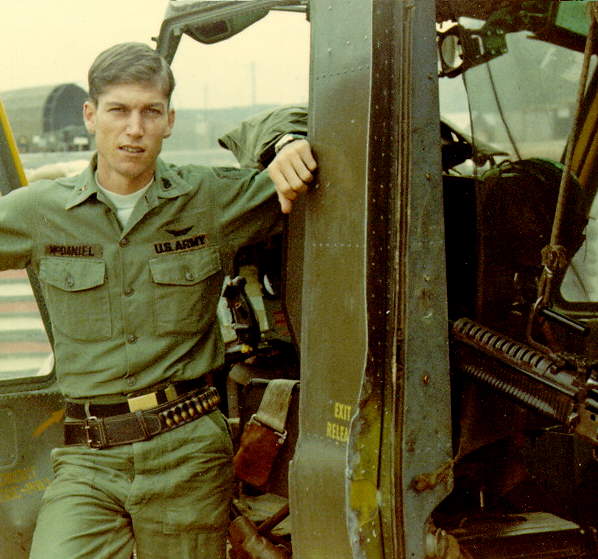 I attended Florida State University from 1963-65. In December 1965, as a Junior, I stayed out a semester (trimester actually) to work when money ran low.
Didn't last long -- I got my letter from the draft board before January 1966 was over. Was sworn in at Coral Gables, FL as a Private E-1 on
April 6, 1966. Basic at Ft. Polk, LA. Attended Warrant Officer helicopter flight class 67-3 at Ft. Wolters, Texas and Ft. Rucker, Alabama,
graduating and receiving my Army pilot's wings in April 1967. First stop, Vietnam.
I attended Florida State University from 1963-65. In December 1965, as a Junior, I stayed out a semester (trimester actually) to work when money ran low.
Didn't last long -- I got my letter from the draft board before January 1966 was over. Was sworn in at Coral Gables, FL as a Private E-1 on
April 6, 1966. Basic at Ft. Polk, LA. Attended Warrant Officer helicopter flight class 67-3 at Ft. Wolters, Texas and Ft. Rucker, Alabama,
graduating and receiving my Army pilot's wings in April 1967. First stop, Vietnam.
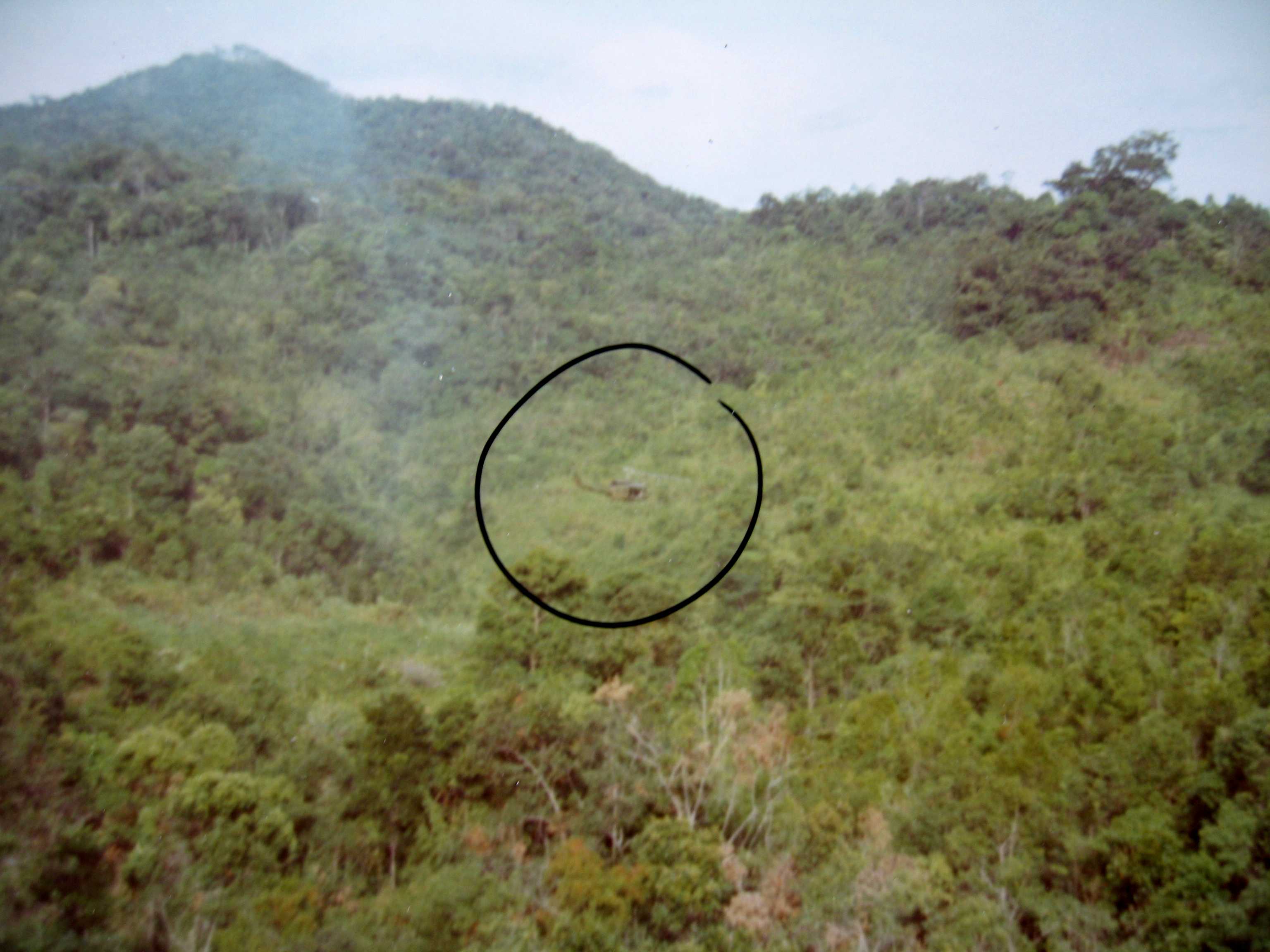 I arrived at Cam Rahn Bay in May 1967, and after my first Chinook ride (to Chu Lai), caught a 174th Dolphin
UH-1 Huey slick down to Duc Pho (in the southernmost part of the northernmost military district of South
Vietham -- I Corps).
I arrived at Cam Rahn Bay in May 1967, and after my first Chinook ride (to Chu Lai), caught a 174th Dolphin
UH-1 Huey slick down to Duc Pho (in the southernmost part of the northernmost military district of South
Vietham -- I Corps).
From May till November 1967 I flew UH-1D Huey Dolphin slicks, and from November till June 1968
I flew UH-1C Huey Shark gunships. The terrain included everything, from sandy-white beaches that
could create white-out conditions from the flying sand to flat water-filled rice paddies to high mountains
and valleys with treacherous cross-winds and high density altitudes.
I was just a snot-nosed kid fresh out of college who couldn't even grow a decent moustache yet. Some
of my photos and descriptions are scattered around the 174th home page -- see the 1967 and 1968 pages.
Because we had a lot of pilots from my flight class (67-3) assigned to the unit at the same time (which meant we'd all leave at the
same time a year later), I was caught up in a DEROS-shuffle in late 1967. I was offered the "opportunity" to transfer to another helicopter unit and return home on schedule or, if
I wanted to stay in the 174th, I'd have to "voluntarily" extend for an additional 30 days. I'd finally gotten into the gunships and didn't want to leave the Sharks, so
I wound up coming home in June 1968 instead of May. (Note, DEROS, for those not familiar with the term, was "Date of Estimated Rotation OverSeas".)
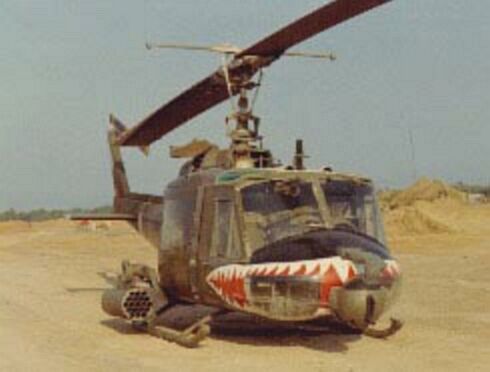 In June '68 I returned to Florida and married my FSU sweetheart (Charlotte Anne Mitchell from Ormond Beach, FL), who I'd started dating my freshman year in 1963. We got married 10 days after I returned. After a short honeymoon to New York city, I
reported to Hunter Army Airfield, in Savannah, GA, and served as an instrument flight instructor from 1968 to 1970. Whereas most of the instrument training units focused on only basic
instrument flying or advanced instruments, my unit did both. We took students all the way through their instrument training --
In June '68 I returned to Florida and married my FSU sweetheart (Charlotte Anne Mitchell from Ormond Beach, FL), who I'd started dating my freshman year in 1963. We got married 10 days after I returned. After a short honeymoon to New York city, I
reported to Hunter Army Airfield, in Savannah, GA, and served as an instrument flight instructor from 1968 to 1970. Whereas most of the instrument training units focused on only basic
instrument flying or advanced instruments, my unit did both. We took students all the way through their instrument training --
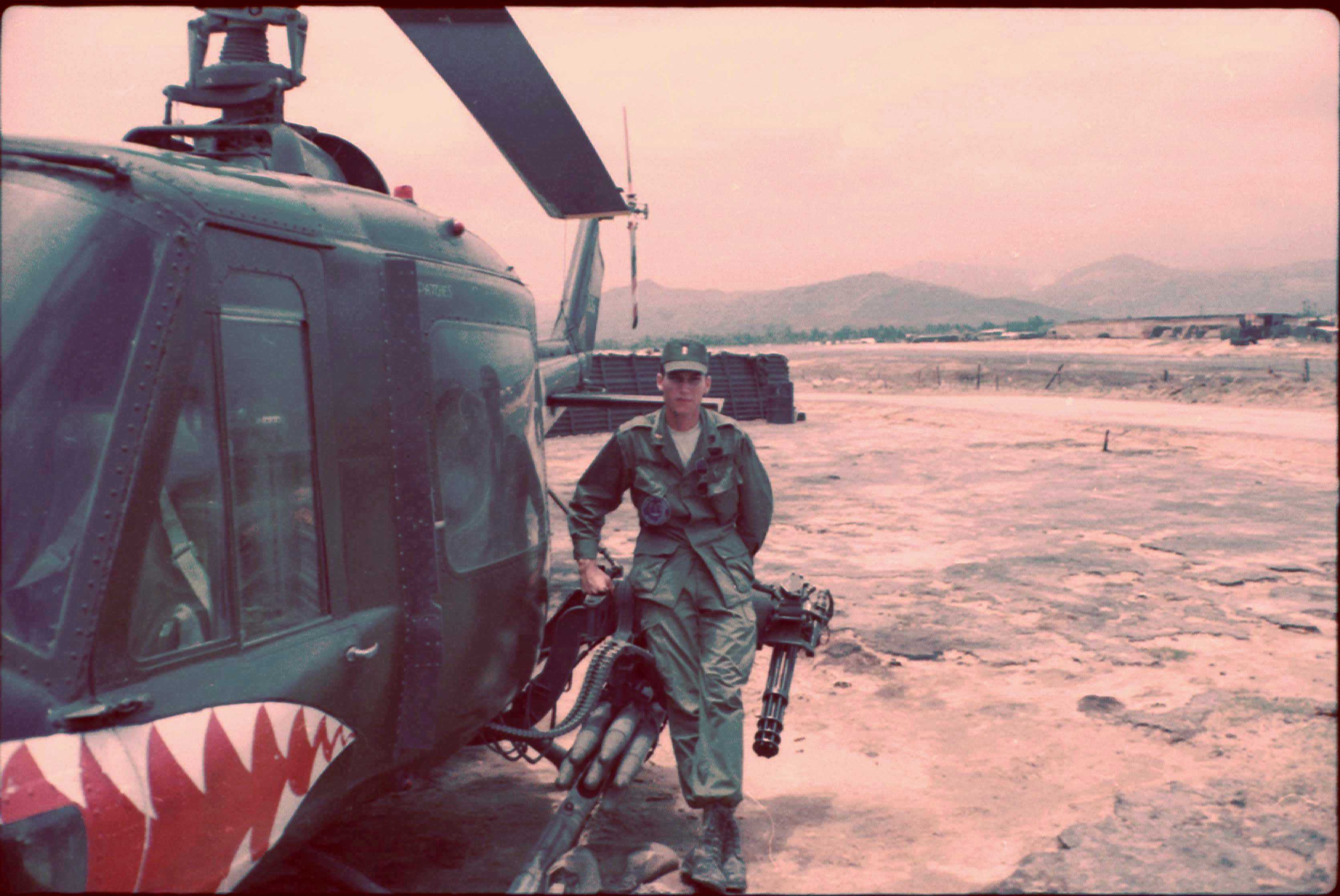 basic instrument flying the Bell TH-13s and advanced instruments in Hueys. They say if you really want to learn how to do something, teach it!
That is so true, and I got a lot of experience in instrument flying. I would be thankful of that assignment throughout my flying career
(both in the Army and civilian flying afterward), as I was always comfortable with instrument flying. For example, having repeatedly (for three years) demonstrated
cross-cockpit full instrument takeoffs (ITOs) from the co-pilot's seat (the students were in the pilot's seat) you will get an understanding and
ability that is hard to pick up otherwise.
basic instrument flying the Bell TH-13s and advanced instruments in Hueys. They say if you really want to learn how to do something, teach it!
That is so true, and I got a lot of experience in instrument flying. I would be thankful of that assignment throughout my flying career
(both in the Army and civilian flying afterward), as I was always comfortable with instrument flying. For example, having repeatedly (for three years) demonstrated
cross-cockpit full instrument takeoffs (ITOs) from the co-pilot's seat (the students were in the pilot's seat) you will get an understanding and
ability that is hard to pick up otherwise.
I put that training to good use my second tour when I was sitting on a hilltop Fire Support Base (FSB) way out west of Chu Lai in Indian country, not far from the Laotian border during monsoon season, and the
clouds closed in on me while idling on the landing pad. I was sitting there at flight idle in a white-out (inside a cloud). After a few minutes, with visibility at essentially zero,
we began to take VC mortars on the fire base. The bad-guys knew I was there -- they could hear me on the pad I'm sure.
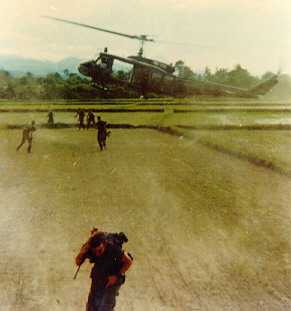 I was in the left seat (co-pilot's seat),
and I got everyone onboard, wound it up, and took off with zero-zero visibility. Having demonstrated it so often to students while teaching in flight school,
I did a zero-airspeed vertical climb-out from the landing pad. I continued the instrument climb till we broke out on top above 10,000 feet, then turned
east toward the South China Sea till I was picked up by Chu Lai Ground Control Approach (GCA) radar. They brought me home. Had I not had the experience as an instrument instructor,
I probably would not have been able to accomplish a take off like that "on such short notice."
I was in the left seat (co-pilot's seat),
and I got everyone onboard, wound it up, and took off with zero-zero visibility. Having demonstrated it so often to students while teaching in flight school,
I did a zero-airspeed vertical climb-out from the landing pad. I continued the instrument climb till we broke out on top above 10,000 feet, then turned
east toward the South China Sea till I was picked up by Chu Lai Ground Control Approach (GCA) radar. They brought me home. Had I not had the experience as an instrument instructor,
I probably would not have been able to accomplish a take off like that "on such short notice."
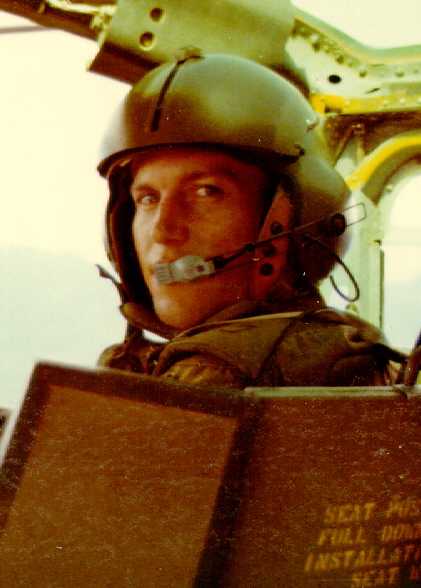 My first son, Scott, was born in Savannah in 1970. I took a direct commission from Chief Warrant Officer (CW2) to First Lieutenant (1LT) in the Air Defense Artillery (ADA) branch in 1970, and I got my
civilian fixed wing commercial airplane and helicopter pilot's license and instrument ratings through the GI bill in 1970. En route to my second tour in Nam in 1971, I went through the Department of the Army
Instructor Pilot and Instrument Flight Examiner schools.
My first son, Scott, was born in Savannah in 1970. I took a direct commission from Chief Warrant Officer (CW2) to First Lieutenant (1LT) in the Air Defense Artillery (ADA) branch in 1970, and I got my
civilian fixed wing commercial airplane and helicopter pilot's license and instrument ratings through the GI bill in 1970. En route to my second tour in Nam in 1971, I went through the Department of the Army
Instructor Pilot and Instrument Flight Examiner schools.
On my second tour in 1971 I was a Captain, back with the 14th Combat Aviation Battalion (CAB) for a second time. I flew the same area of operations (AO) in Americal Division
(again), but this time with the 116th AHC (callsign "Hornets"). LAM SON 719 (the Vietnamese Laotian invasion) was in full swing when I got back in country. I'd asked to go back into the 174th, but
I was told the 174th had many of it's helicopters shot down in Laos and didn't need that many pilots right then. The 116th however, just one Assault Helicopter Company that was supporting the entire Americal Division
at Chu Lai, was hurting for pilots. So that's where I went. LZ MaryAnn was overrun by the North Vietnamese Army (NVA) while I was in-processing at the Americal Combat Center.
In the 116th, I became the unit Standardization Instructor Pilot (SIP) and unit Instrument Flight Examiner (IFE). I stayed in
slicks the whole tour. I had asked to go back into the guns (the 116th gunships were known as the "Stingers"), but the Old Man had a gun platoon leader but he didn't have an SIP.
I became "Hornet 20" and the unit SIP. We lived on the beach at Chu Lai until the
Americal Division stood down, right after Typhoon Hester tore everything up. That's when we closed down Chu Lai and gave it back to the Viet Cong
(there wasn't that much left after Typhoon Hester anyway).
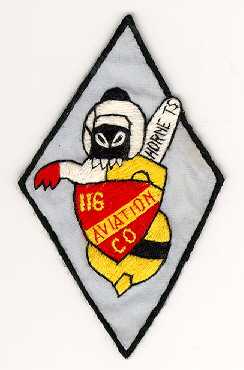 Interesting: I was flying Hueys for Americal when they formed in 1967, and I was flying Hueys for them when they stood down
in 1971. Would you believe we were still putting combat assaults into the same rice paddys and LZ's in 1971 that we were in
1967? True! And practically all the same Fire Support Bases (FSBs) were still there and active, except we'd opened up more of them
further out to the west in 1971. Let's see, I believe FSB Professional was one that'd been closed down in 1971, and
FSB's Siberia and Maryann were two new ones.
Interesting: I was flying Hueys for Americal when they formed in 1967, and I was flying Hueys for them when they stood down
in 1971. Would you believe we were still putting combat assaults into the same rice paddys and LZ's in 1971 that we were in
1967? True! And practically all the same Fire Support Bases (FSBs) were still there and active, except we'd opened up more of them
further out to the west in 1971. Let's see, I believe FSB Professional was one that'd been closed down in 1971, and
FSB's Siberia and Maryann were two new ones.
At this time the U.S. was in the process of drawing down and getting out of Vietnam. After closing Chu Lai, we moved to Marble Mountain (near DaNang) and I lived there awhile before I finished my tour living at "Gunfighter Village" on the main DaNang
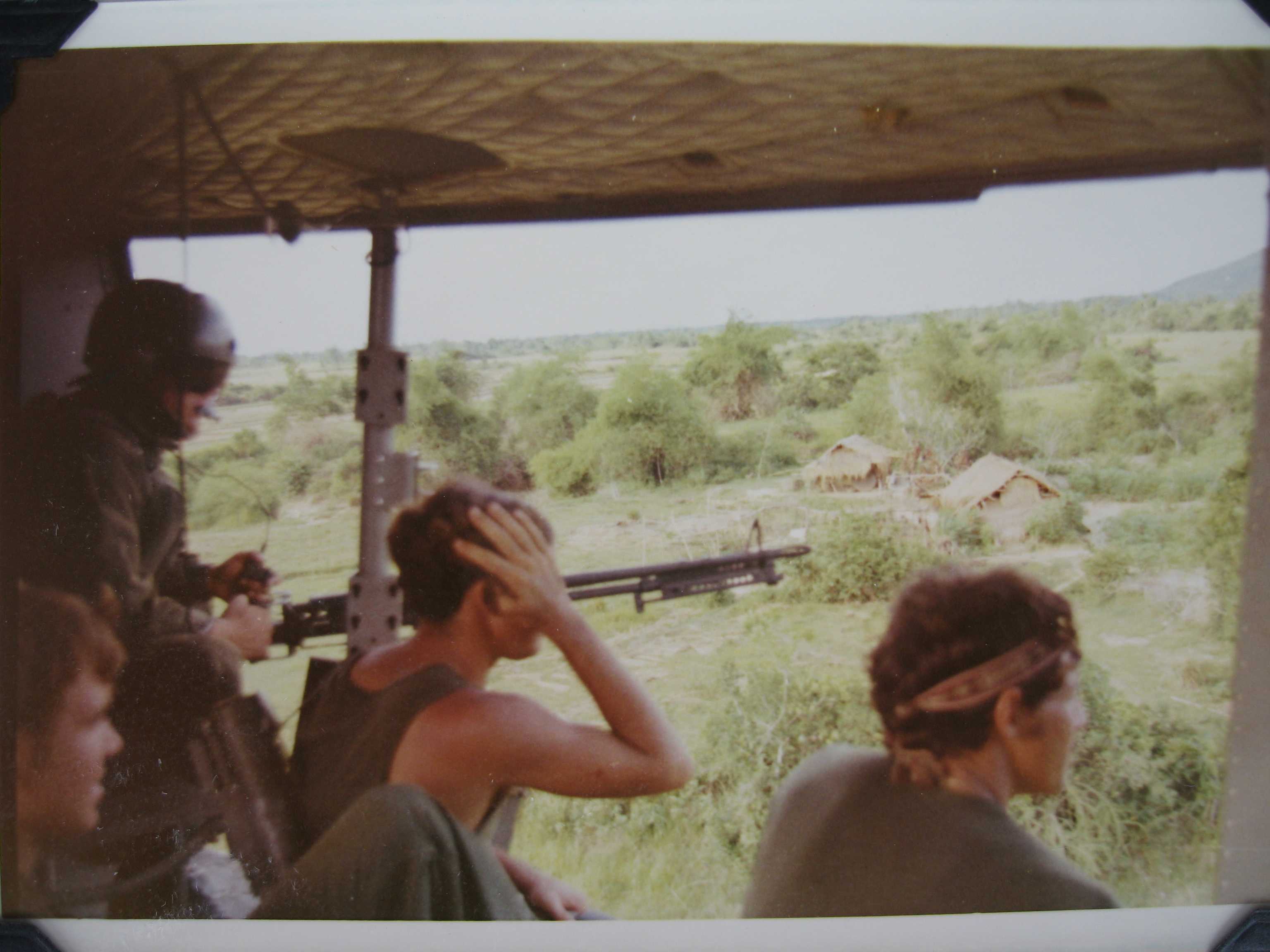 air base (with the pilots from a USAF F-4 Phantom squadron with the call sign Gunfighters). I was the chief instructor pilot for an "ad hoc"
unit charged with training Vietnamese Air Force (VNAF) pilots to fly all those Hueys we were giving them as U.S.
helicopter units stood down. Many of the Vietnamese pilots could barely speak English. Can you say "Vietnamization?" MAN, what a JOB! In most cases language was the most
difficult part of teaching flying: "We go up now." "We go down now." And my favorite, "I have the controls!" Whew! I finished
up my second tour just before Christmas 1971 with 1,700 total combat flight hours in Vietnam, basic load of 44 Air Medals, Purple Heart, Bronze Star, etc.
air base (with the pilots from a USAF F-4 Phantom squadron with the call sign Gunfighters). I was the chief instructor pilot for an "ad hoc"
unit charged with training Vietnamese Air Force (VNAF) pilots to fly all those Hueys we were giving them as U.S.
helicopter units stood down. Many of the Vietnamese pilots could barely speak English. Can you say "Vietnamization?" MAN, what a JOB! In most cases language was the most
difficult part of teaching flying: "We go up now." "We go down now." And my favorite, "I have the controls!" Whew! I finished
up my second tour just before Christmas 1971 with 1,700 total combat flight hours in Vietnam, basic load of 44 Air Medals, Purple Heart, Bronze Star, etc.
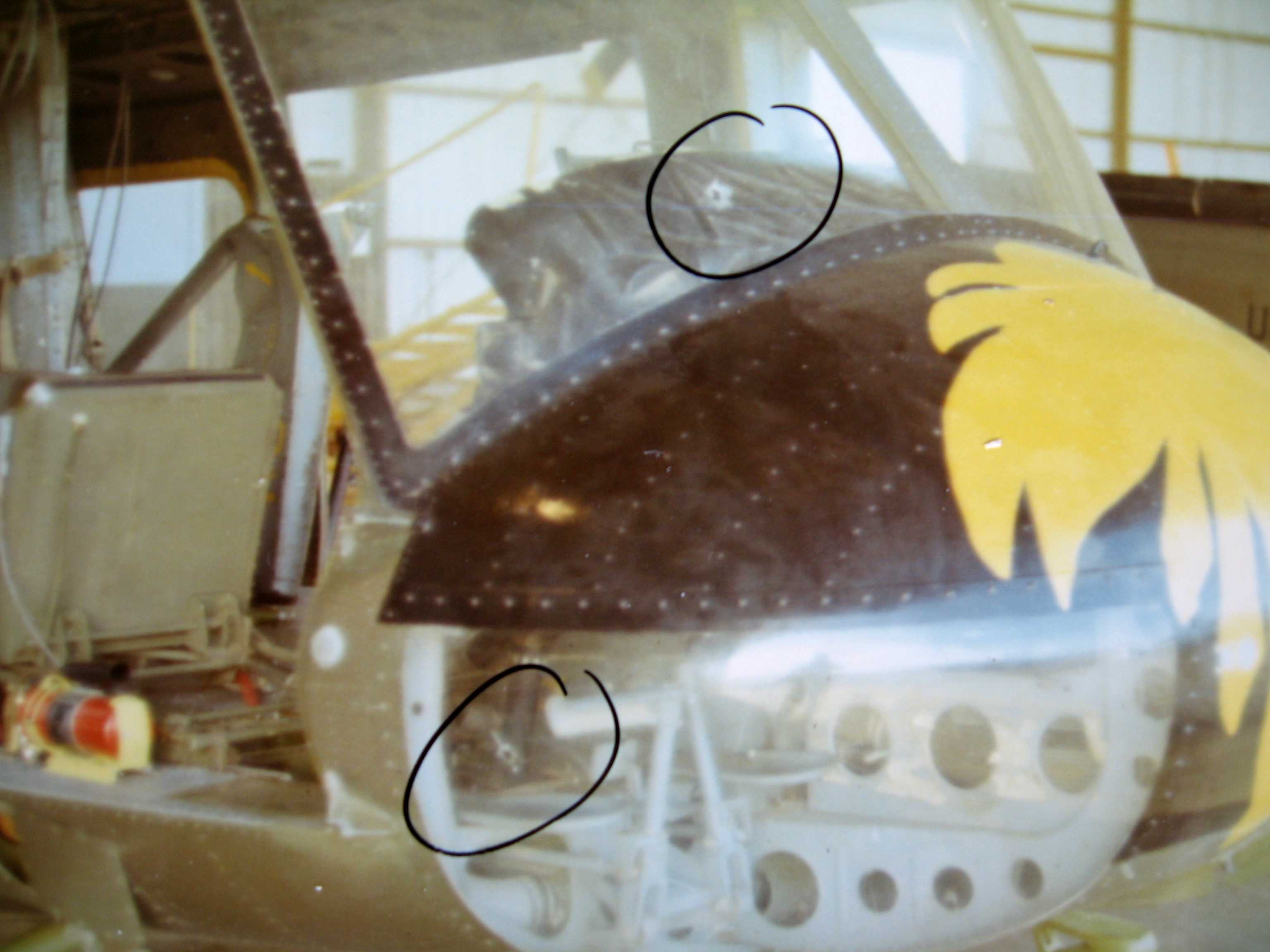 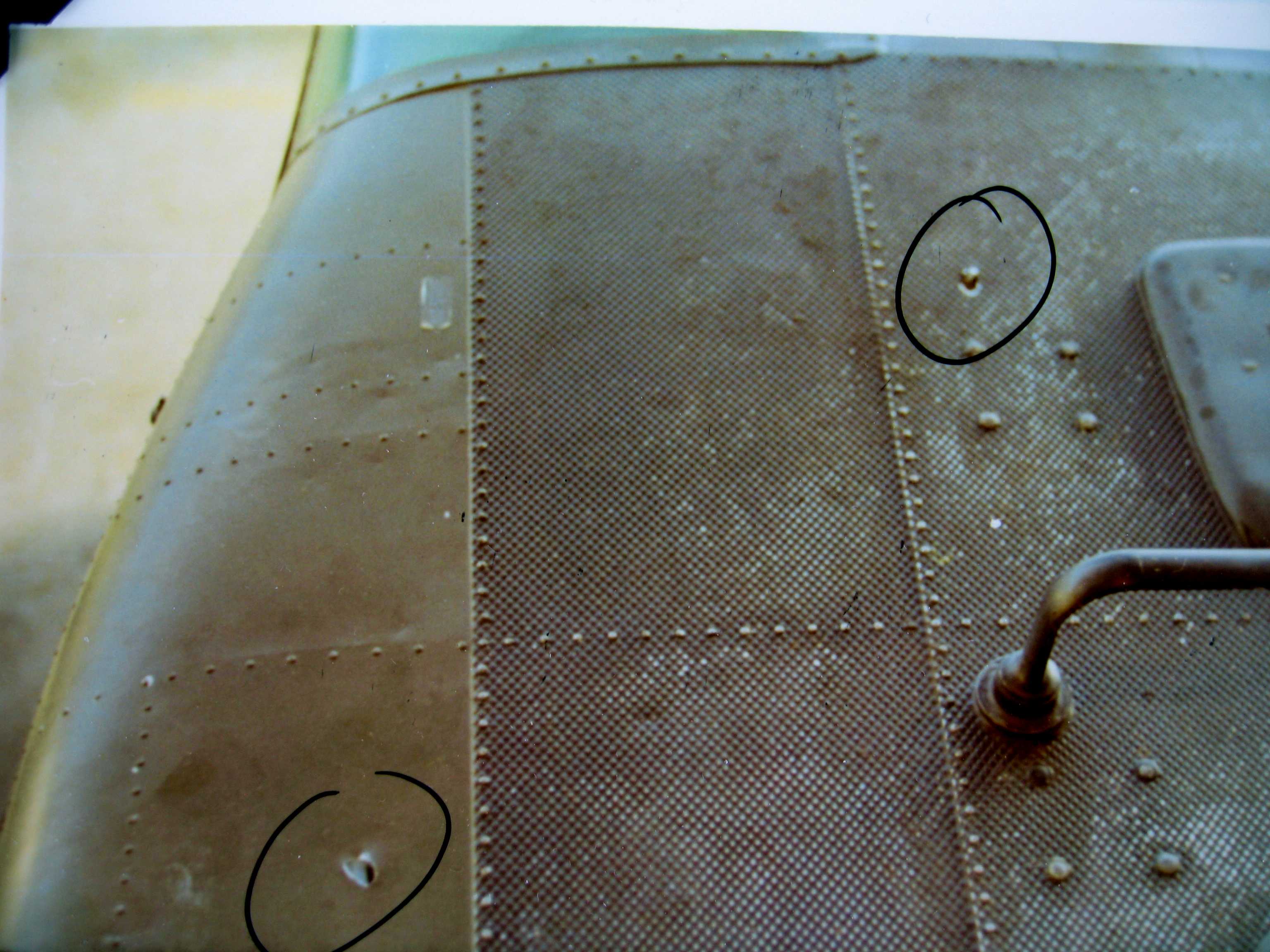 After returning from Nam to Ft. Riley, KS, I spent six years in ADA (artillery) ground assignments in the U.S. (CONUS) and Germany as battery commander,
operations officer, and ADA Group (brigade-level) S-2 (Intelligence Officer). Just after I was assigned as a battery commander at Ft. Riley in
a Chaparral/Vulcan battalion in the First Infantry Division (Big Red One), the entire battalion came down on
Permanent Change of Station (PCS) orders for Germany. We were the Big Red One's organic Air Defense battalion, and as the 1st ID was the "Reforger"
unit at that time, they decided to transfer their Air Defense unit to Germany to be able to participate in Reforger.
After returning from Nam to Ft. Riley, KS, I spent six years in ADA (artillery) ground assignments in the U.S. (CONUS) and Germany as battery commander,
operations officer, and ADA Group (brigade-level) S-2 (Intelligence Officer). Just after I was assigned as a battery commander at Ft. Riley in
a Chaparral/Vulcan battalion in the First Infantry Division (Big Red One), the entire battalion came down on
Permanent Change of Station (PCS) orders for Germany. We were the Big Red One's organic Air Defense battalion, and as the 1st ID was the "Reforger"
unit at that time, they decided to transfer their Air Defense unit to Germany to be able to participate in Reforger.
Reforger was a Division-sized field training exercise during the Cold War
and included participation by the military forces of France, Germany, Great Britian, and other allies. We were essentially "protecting" Europe from the
Russian hoards expected to pour through the "Fulda Gap," a highly vulnerable and difficult to defend location should a "hot war" break out. During non-Reforger times (which was most
of the time) we were assigned to the 32nd Army Air Defense Command. When I was assigned as the Group Intelligence Officer, we had the low-altitude air defense responsibilities
for Kaiserslautern, Permaisens Army Depot, Bitburg AFB, Hahn AFB, Spangdallem AFB, Ramstein AFB, Sembach AFB, and some others. It was certainly a busy and "interesting" time for our country and our armed forces.
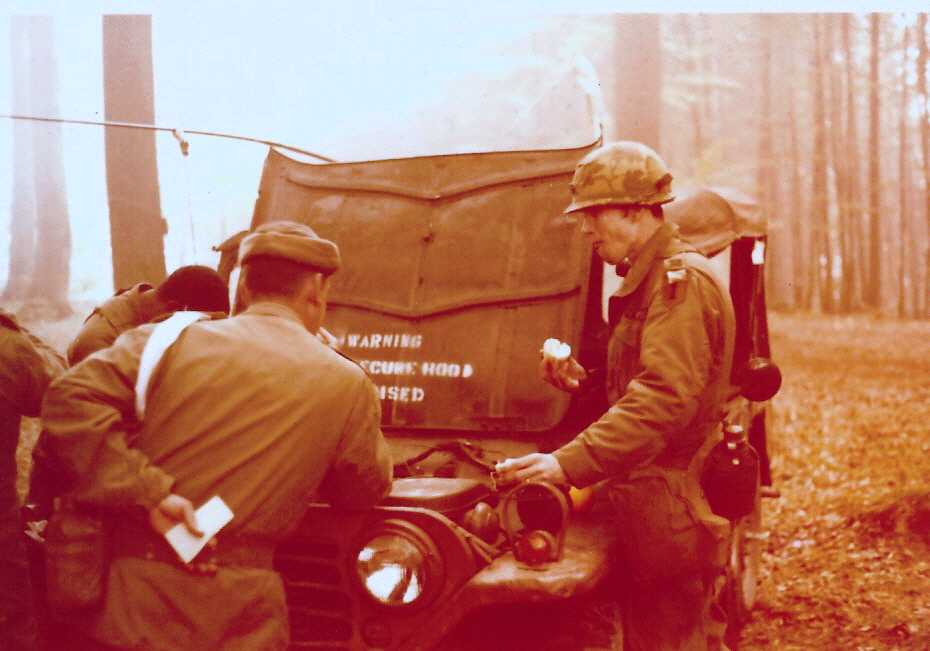 I logged ZERO flight time during those years, as it was a "Category B" assignment (meaning non-flying), and at that post-Vietnam
time in the mid-1970s, if you had over 1,500 flight hours and was in a Cat. B assignment, you were "prohibited" from "performing air crew duties." Bummer.
I logged ZERO flight time during those years, as it was a "Category B" assignment (meaning non-flying), and at that post-Vietnam
time in the mid-1970s, if you had over 1,500 flight hours and was in a Cat. B assignment, you were "prohibited" from "performing air crew duties." Bummer.
A lot of my friends, really good pilots and officers, got caught up in the post-Vietnam draw-down and were "let go" in the Army's Reductions-in-Force" (RIFs).
As I recall there were three separate RIFs, and by the end of the third one the ranks had been considerably thinned. I think the only thing that saved me was
the fact I'd returned from Vietnam and, being an ADA officer, had gotten good officer efficiency reports as an ADA battery commander. Many of my friends had remained in the cockpit,
and those officers without what they called "branch material" assignments were swept away in the RIF flood. Too bad. Had I been given a choice, I too would have remained
in the cockpit in a flight assignment somewhere and, in all probability, been forcecd out as well. Lucky me. Given skill or luck, I'll take luck any day.
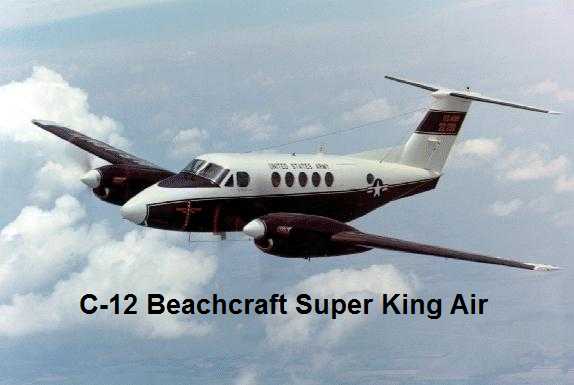 My second son, Mason, was born in Germany in 1973 at the large military hospital complex at Lanstuhl, near Kaiserslautern. The family now numbered four.
My second son, Mason, was born in Germany in 1973 at the large military hospital complex at Lanstuhl, near Kaiserslautern. The family now numbered four.
We returned from Germany in 1975 to Ft. Bliss in El Paso, Texas for the ADA Officer Advanced Course. Following completion of the advanced course, I was
accepted into the "degree completion" program for my bachelors degree, and I went to school full time at the University of Texas at El Paso.
There I learned to eat Mexican food -- HOT! This assignment worked well for me, as I was allowed to stay in government quarters at Ft. Bliss while attending college.
I finished my bachelors degree at El Paso in 1977, then got lucky (again) and was accepted into the fixed wing (airplane) transition course at Ft. Rucker. (My getting my civilian commercial airplane ratings back in Savannah didn't seem to hurt).
I transitioned through T-42s (Beach Barons) to U-21s (Beach King Air turboprops) to C-12s (Super King Air turboprops).
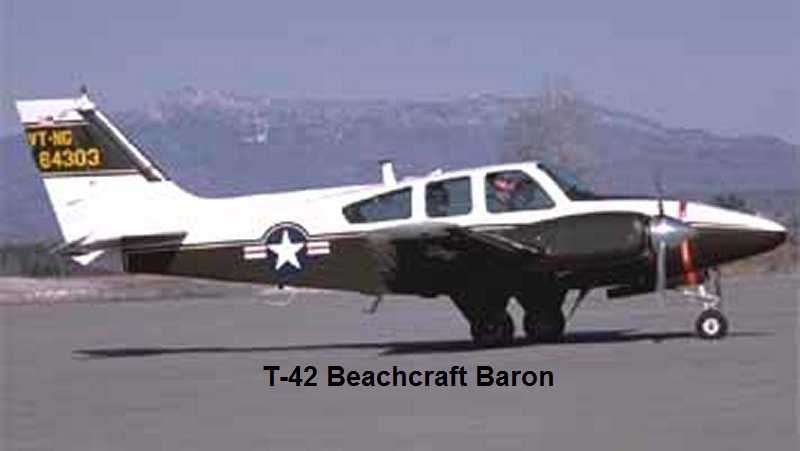 In 1978 I was assigned to the Training and Doctrine Command (TRADOC) Flight Detachment at Ft. Monroe, Virginia, supporting the Commanding General and
his staff. The CG was General Donn Starry when I arrived. I became the unit executive officer and flew UH-1s, T-42s, U-21s, and C-12s. What a wonderful job --
a glorified taxi driver really!
In 1978 I was assigned to the Training and Doctrine Command (TRADOC) Flight Detachment at Ft. Monroe, Virginia, supporting the Commanding General and
his staff. The CG was General Donn Starry when I arrived. I became the unit executive officer and flew UH-1s, T-42s, U-21s, and C-12s. What a wonderful job --
a glorified taxi driver really!
Great taxi's though.
While at TRADOC, in the late '70s, I started a master's degree program attending school at nights with the George Washington University's extension program. Being a "gadget guy,"
I selected computers as my major field of study. When I left TRADOC in 1980, I was able to get the Army's Automatic Data Processing (ADP) school en route to
my next assignment. Today ADP is known as Information Technology, or "IT," and I was assigned an "alternate specialty" of ADP Officer. It's interesting that my primary specialty was Artillery Officer and ADP was my alternate.
My qualifications as a Senior Army Aviator, at which I was considerably more qualified, was considered a distant third. That's the way the Army worked.
Following TRADOC and the ADP school I went to Washington, DC and served on the
Army staff at the Pentagon. I was a Major at this time and was a staff officer for the Assistant Chief of Staff for Intelligence (ACSI) as a computer guy working on battlefield intelligence automation systems.
Remember, this is 1981 -- prior to the introduction of the "personal computer." We were coding in FORTRAN and Basic languages, and we still had IBM cards.
I bought my first "home computer" then, a Timex Sinclair 1000 (you don't want to know), followed shortly by a Commodore-64. It didn't even have a floppy drive, yet alone a hard drive.
Had to load programs using an audio cassette tape with mini-phone plugs from the tape recorder to the computer. I thought I'd died and gone to heaven when I got a 5-1/4" floppy
disk drive. I completed my masters degree with George Washington in 1982 while at the Pentagon.
Also in 1982 I branch transferred out of ADA branch and became a charter member of the new AVIATION BRANCH when it was formed. My number three specialty now
became my number one specialty. Yeeehah! I still have my Aviation Branch Charter Member (challenge) coin.
Following the Pentagon job, I went to Davison Army Airfield at Ft. Belvoir, VA, just south of DC's beltway. Initially I was the Chief of Flight Training,
in charge of the command's instructor pilots and Synthetic Flight Training System (SFTS), then I became the Airfield Commander for the remainder of my time
there, 1983-85.
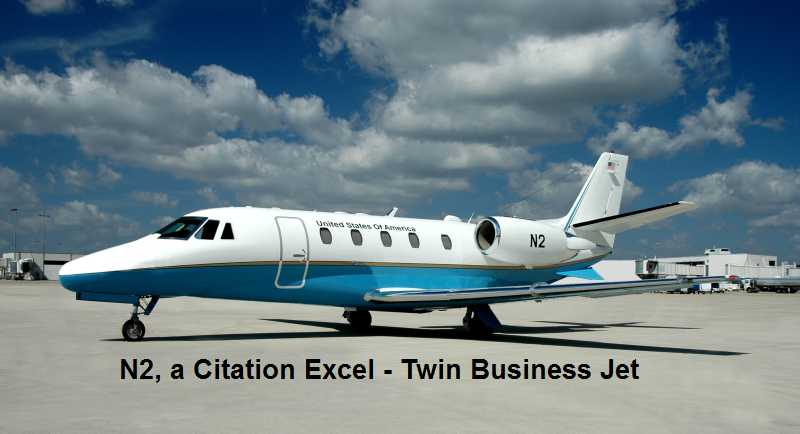 From Davison I joined the National Defense University faculty at Ft. McNair, DC in 1985 as the Computer Security Department Chairman for the
DOD Computer Institute. I taught computer security and supervised a staff of instructors who taught computer security to mid- and senior-level military managers, and we provided
computer security consulting services to military organizations.
From Davison I joined the National Defense University faculty at Ft. McNair, DC in 1985 as the Computer Security Department Chairman for the
DOD Computer Institute. I taught computer security and supervised a staff of instructors who taught computer security to mid- and senior-level military managers, and we provided
computer security consulting services to military organizations.
My final military assignment was as a liaison officer for the Federal Aviation Administration headquarters in Washington DC.
Somehow I got them to designate it as a Category A (flight slot) assignment, meaning I would maintain my flight qualifications in addition to my
main "desk job." I joined the FAA's headquarters flight program and, through the
years, have flown Beach Barons and both the Cessna Citation V and the Citation Excel business jets. What great scooters -- who'd have thought
a Cessna would fly over 425 knots and climb to 45,000 feet? Included is a photo of N2, one of the Citation Excels I often flew. In addition to flying the FAA administrator and the
Secretary of Transportation, and their leadership teams, one of the missions of the flight department is to fly the National Transportation Safety Board's (NTSB) "Go Team" when they're called
out on very short notice to investigate aviation accidents.
I worked in FAA headquarters for three years as a "plain-clothes" Lieutenant Colonel from 1987 until I retired in 1990 (just under 25 years
active duty). I then stayed on as a real-live bureaucrat with the FAA doing research and development (R&D). I managed the
FAA's Civil Tiltrotor Program and the Vertical Flight Program in the early 1990's (basically rotorcraft R&D). I left the rotorcraft business several
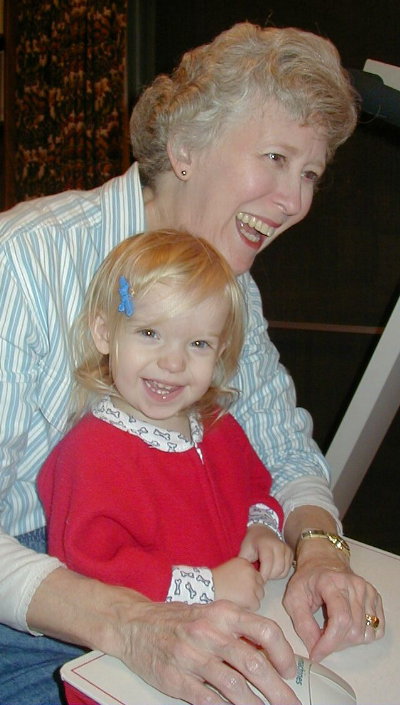 years later (my boss called it career broadening?) to do other FAA work in the areas of oceanic data link, aeronautical hazards, aeronautical
data link research, advanced avionics, and Automatic Dependent Surveillance - Broadcast (ADS-B). My last assignment with the FAA was working on
advanced technologies R&D, mostly with the introduction of satellite-based avionics. We helped to expedite the fielding of new, cool "stuff" into the National Airspace System.
I retired from the FAA in October 2010 with 45 years of Federal service (25 with the army, 20 with the FAA).
years later (my boss called it career broadening?) to do other FAA work in the areas of oceanic data link, aeronautical hazards, aeronautical
data link research, advanced avionics, and Automatic Dependent Surveillance - Broadcast (ADS-B). My last assignment with the FAA was working on
advanced technologies R&D, mostly with the introduction of satellite-based avionics. We helped to expedite the fielding of new, cool "stuff" into the National Airspace System.
I retired from the FAA in October 2010 with 45 years of Federal service (25 with the army, 20 with the FAA).
Lots of interests and hobbies. Some include:
 Family -- Both boys are now grown, married, and (most importantly)
support themselves and their families with REAL grown-up JOBS! My kids are great! They both work in the technology field and live in the
Washington DC area. My oldest son Scott and his wife Michelle live near us and made Char and me grandparents for the first
time on March 19, 1999. Grandfatherdom: What a Grand Institution! It just doesn't get much better than grandchildren! (Ask
any Granddad.) Mason and his wife Amy also live nearby and provided us with a grandson in August 2005 and a second granddaugher in May 2009. It's great having
them all so close. We get together often. Wonderful kids! I still have my FSU sweetheart (pictured here with an early photo
of our oldest granddaughter -- I think Grandma is enjoying the Elmo computer game as much as our granddaughter). Family -- Both boys are now grown, married, and (most importantly)
support themselves and their families with REAL grown-up JOBS! My kids are great! They both work in the technology field and live in the
Washington DC area. My oldest son Scott and his wife Michelle live near us and made Char and me grandparents for the first
time on March 19, 1999. Grandfatherdom: What a Grand Institution! It just doesn't get much better than grandchildren! (Ask
any Granddad.) Mason and his wife Amy also live nearby and provided us with a grandson in August 2005 and a second granddaugher in May 2009. It's great having
them all so close. We get together often. Wonderful kids! I still have my FSU sweetheart (pictured here with an early photo
of our oldest granddaughter -- I think Grandma is enjoying the Elmo computer game as much as our granddaughter).
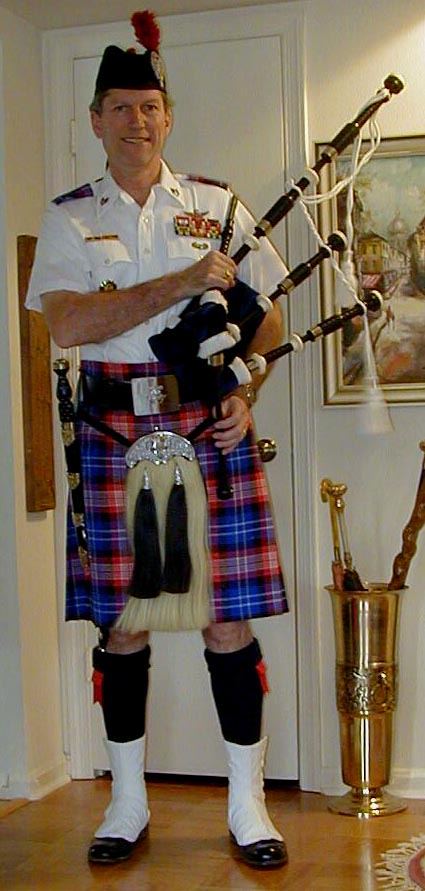
 Free Masonry -- I am an Ancient Free and Accepted Master Mason
at Acacia Lodge No. 16 in Clifton, Virginia, a fine brotherhood of men. I am also a 32nd degree Scottish Rite Free Mason and
a Shriner with KENA Temple in Fairfax, Virginia. I play that old Scottish Warhorn (the Great Highland Bagpipe) and am the Pipe Major of
my pipe band, the KENA Highlanders Pipe and Drum band. Free Masonry -- I am an Ancient Free and Accepted Master Mason
at Acacia Lodge No. 16 in Clifton, Virginia, a fine brotherhood of men. I am also a 32nd degree Scottish Rite Free Mason and
a Shriner with KENA Temple in Fairfax, Virginia. I play that old Scottish Warhorn (the Great Highland Bagpipe) and am the Pipe Major of
my pipe band, the KENA Highlanders Pipe and Drum band.
 Family genealogy -- and research of my Clan Donald Scottish
ancestors and history. I am active in Clan Donald U.S.A. I continue to research my family lines and have two lines back
to the 1500s. Lots of work remaining to document sources, however. Genealogy is a hobby you just NEVER reach the end of. Family genealogy -- and research of my Clan Donald Scottish
ancestors and history. I am active in Clan Donald U.S.A. I continue to research my family lines and have two lines back
to the 1500s. Lots of work remaining to document sources, however. Genealogy is a hobby you just NEVER reach the end of.
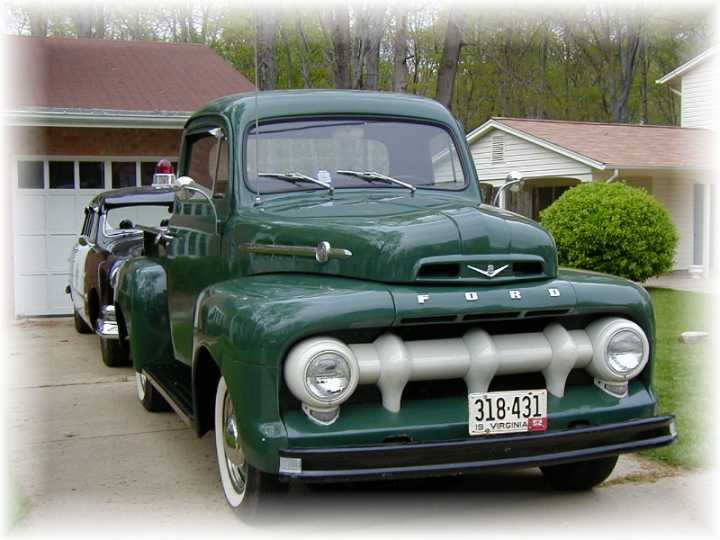
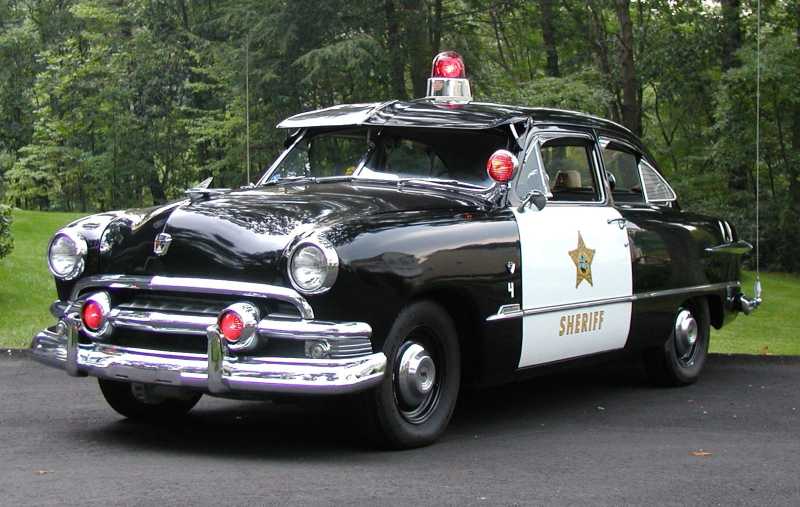
 Antique cars -- I own and restored a 1951 flathead V-8
Ford black-and-white Lee County, Florida sheriff's cruiser. I often take it on Club tours, to car shows, and through the years have supported several law enforcement
agencies in parades and displays, such as the Police Officers memorial service for fallen officers at
the Arlington, Virginia police department. Until recently I also had a "driver" 1952 Ford flathead V-8 F-1 "Fat-Fender" pickup. Great
little truck! Although I had to get rid of the truck because I didn't have a place to keep it and I just couldn't stand to see
it rust away out in the rain and snow, I just can't bring myself to remove the photo. Loved that old truck.
Both the car and truck are almost completely original, or at least correct for the year (except for safety reasons I installed seat belts),
and everything on both of them works (including the tube-type AM radio, wind-up clock, siren, and all lights on the cruiser). Both recently
received new (well, 60-year-old rebuilt) flathead V-8 engines. I drive the cruiser a lot, and all the local cops wave and
the kids stare! A fun (but expensive) hobby. Antique cars -- I own and restored a 1951 flathead V-8
Ford black-and-white Lee County, Florida sheriff's cruiser. I often take it on Club tours, to car shows, and through the years have supported several law enforcement
agencies in parades and displays, such as the Police Officers memorial service for fallen officers at
the Arlington, Virginia police department. Until recently I also had a "driver" 1952 Ford flathead V-8 F-1 "Fat-Fender" pickup. Great
little truck! Although I had to get rid of the truck because I didn't have a place to keep it and I just couldn't stand to see
it rust away out in the rain and snow, I just can't bring myself to remove the photo. Loved that old truck.
Both the car and truck are almost completely original, or at least correct for the year (except for safety reasons I installed seat belts),
and everything on both of them works (including the tube-type AM radio, wind-up clock, siren, and all lights on the cruiser). Both recently
received new (well, 60-year-old rebuilt) flathead V-8 engines. I drive the cruiser a lot, and all the local cops wave and
the kids stare! A fun (but expensive) hobby.
 Computers -- I have had a home computer since the "dawn of
civilization" (PRE-Commodore 64), and am Internet webmaster for this site. Computers -- I have had a home computer since the "dawn of
civilization" (PRE-Commodore 64), and am Internet webmaster for this site.
Doting Grandfather Pictures Below
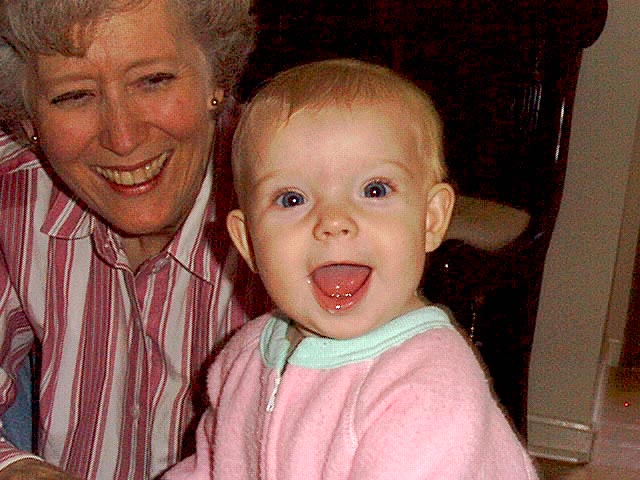
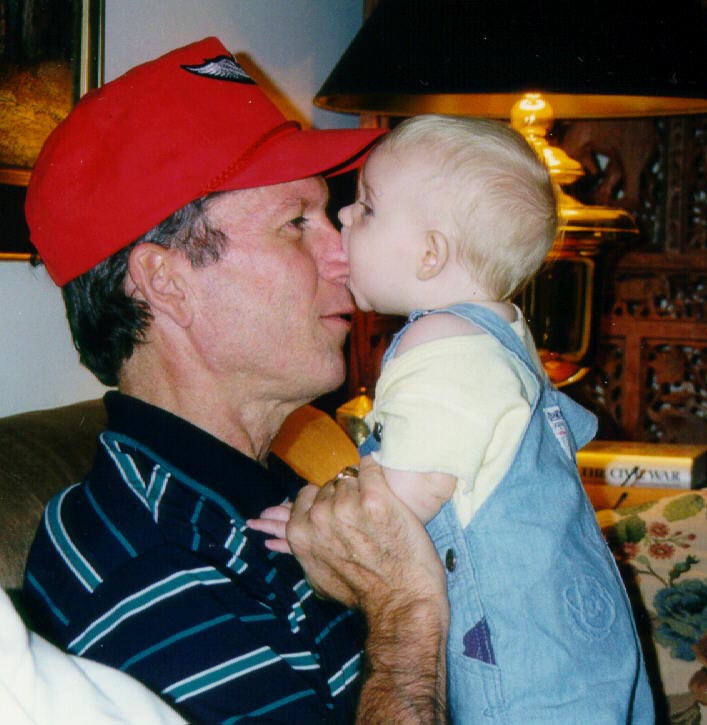
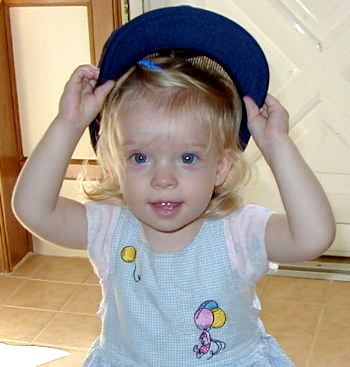

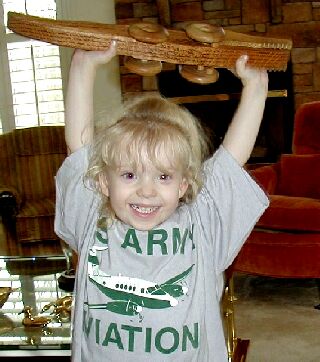
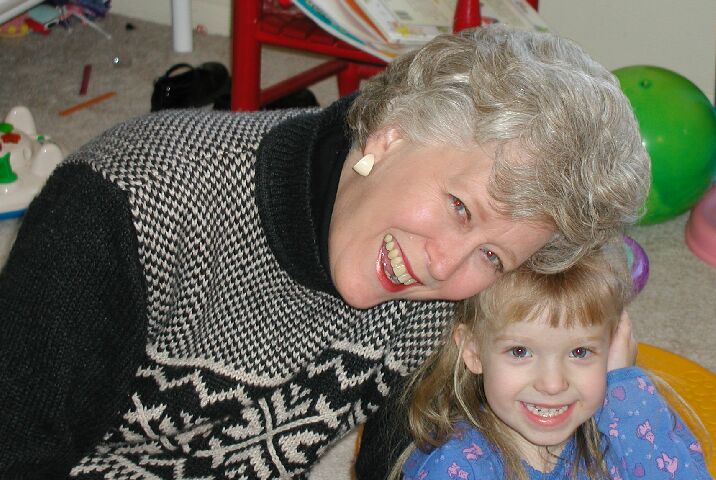
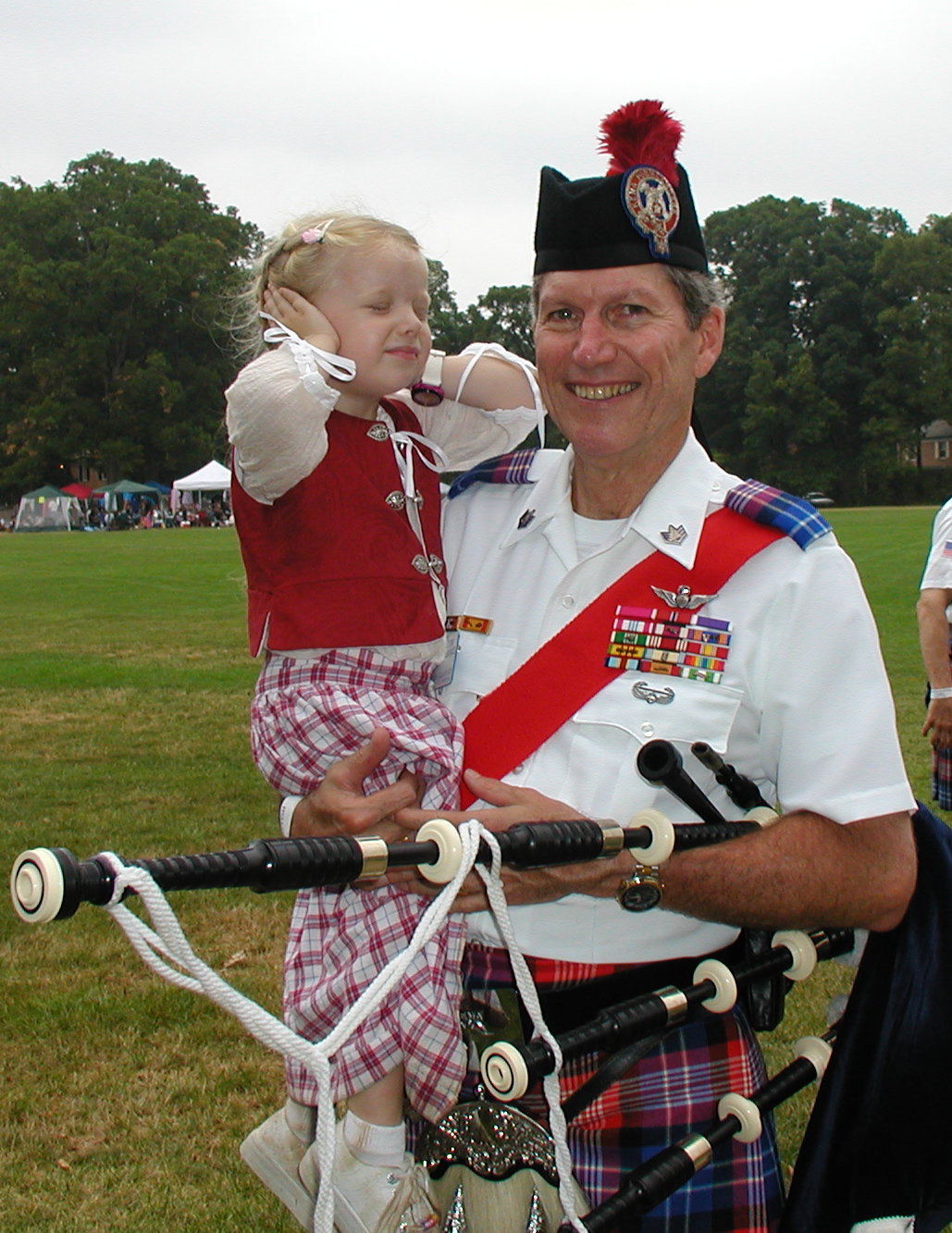
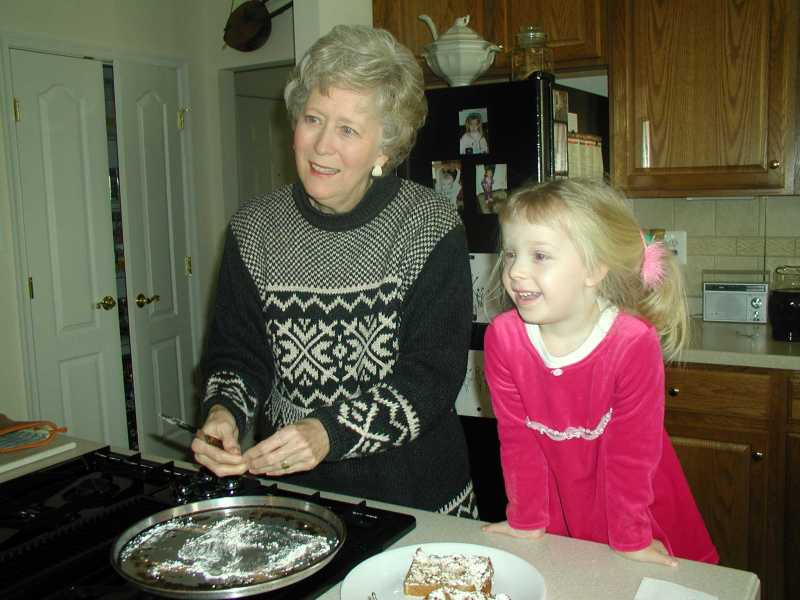
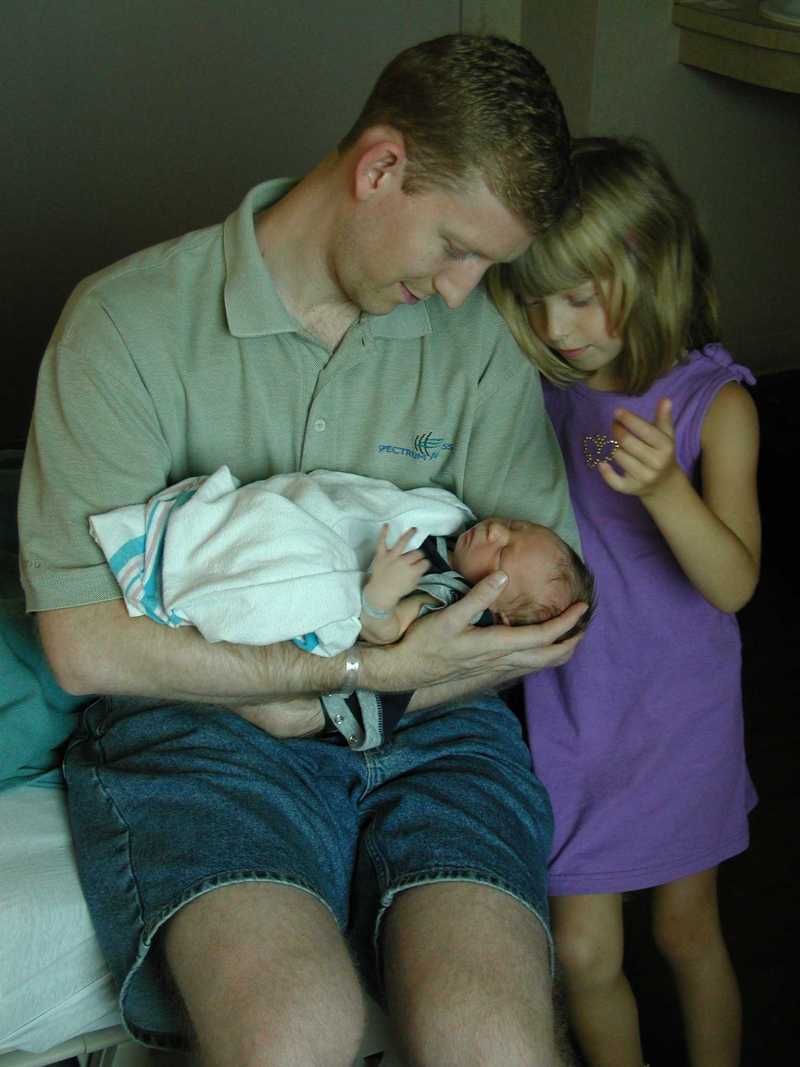
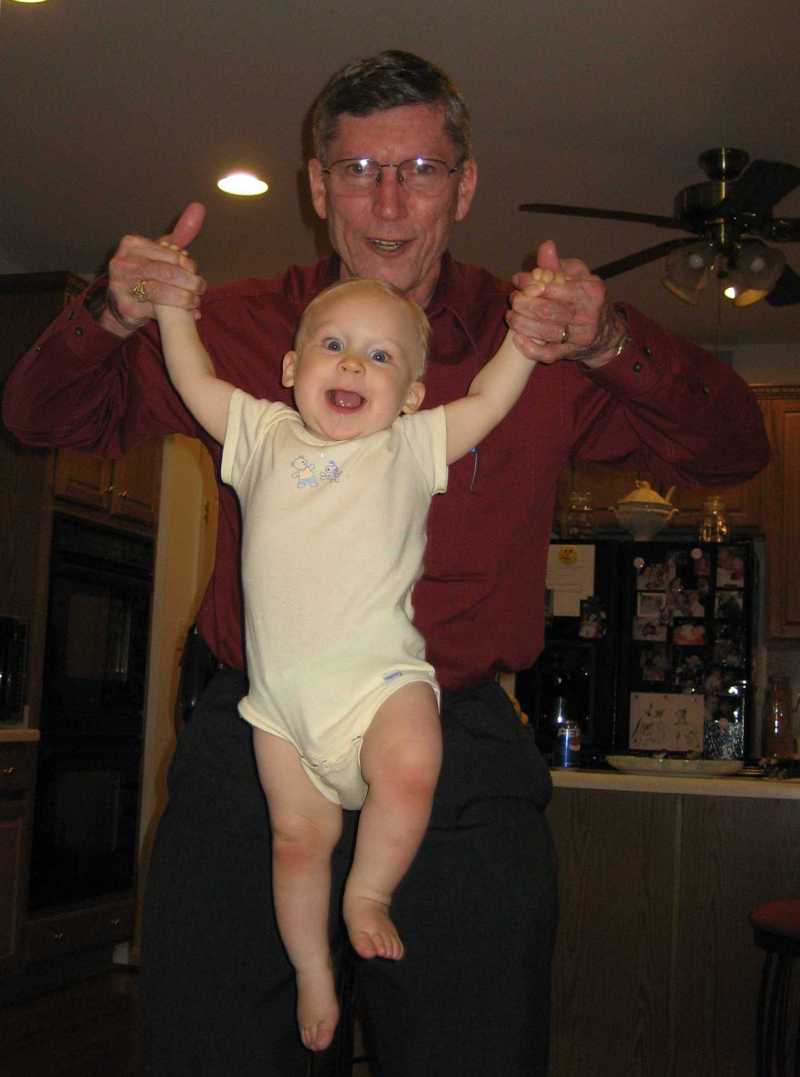
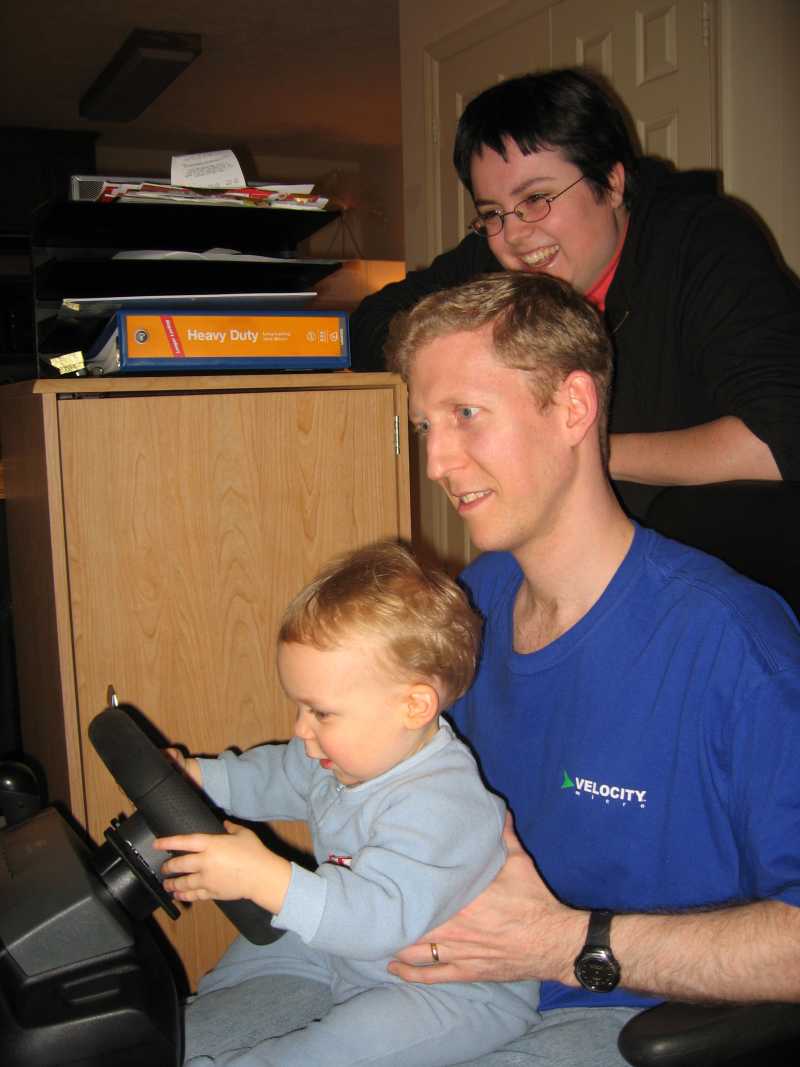
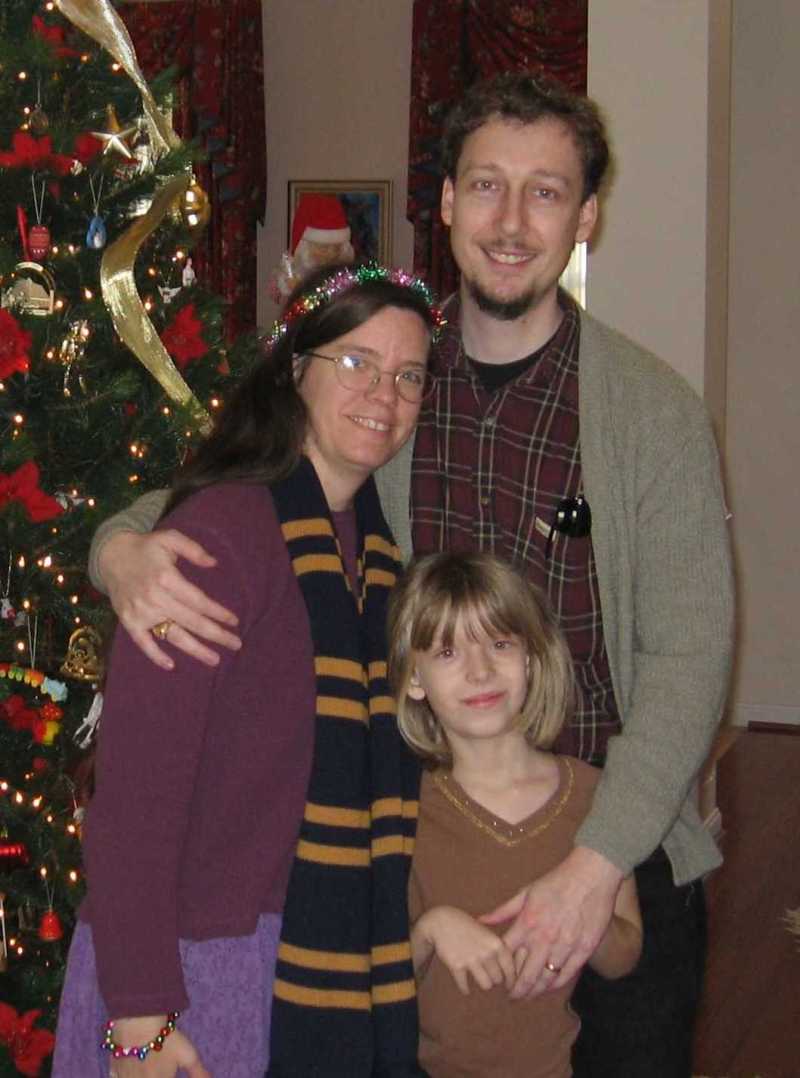
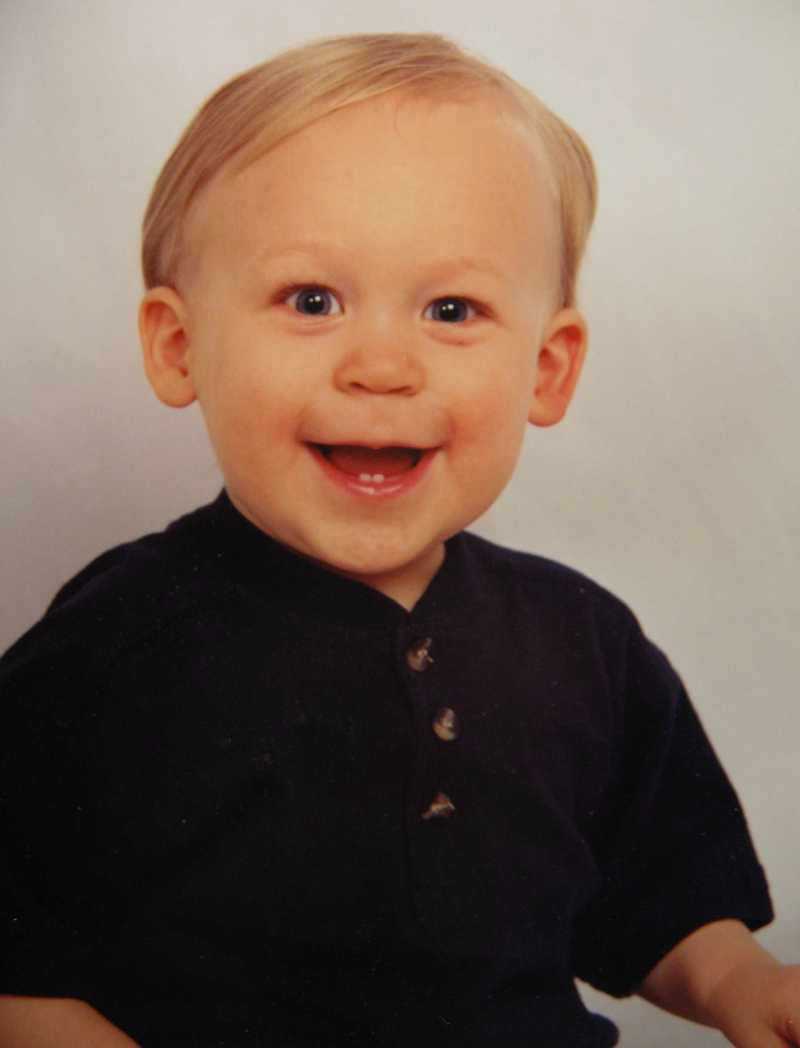
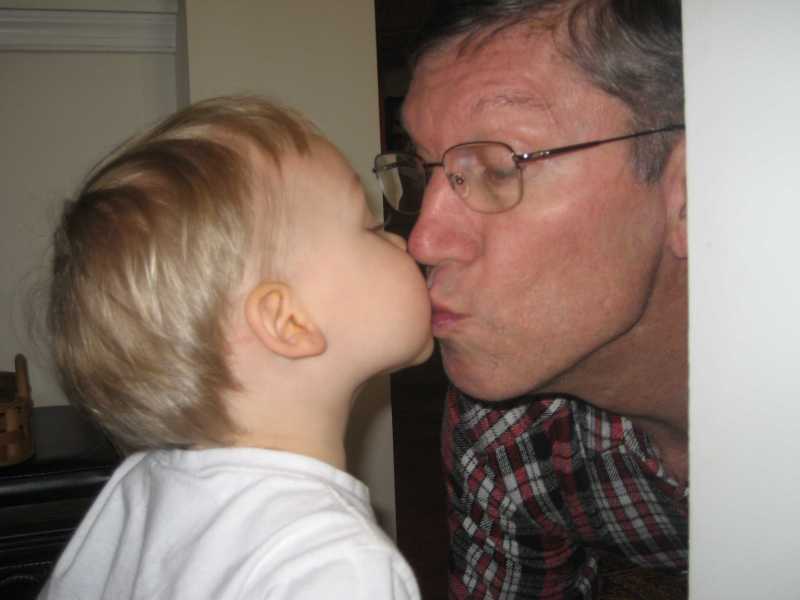
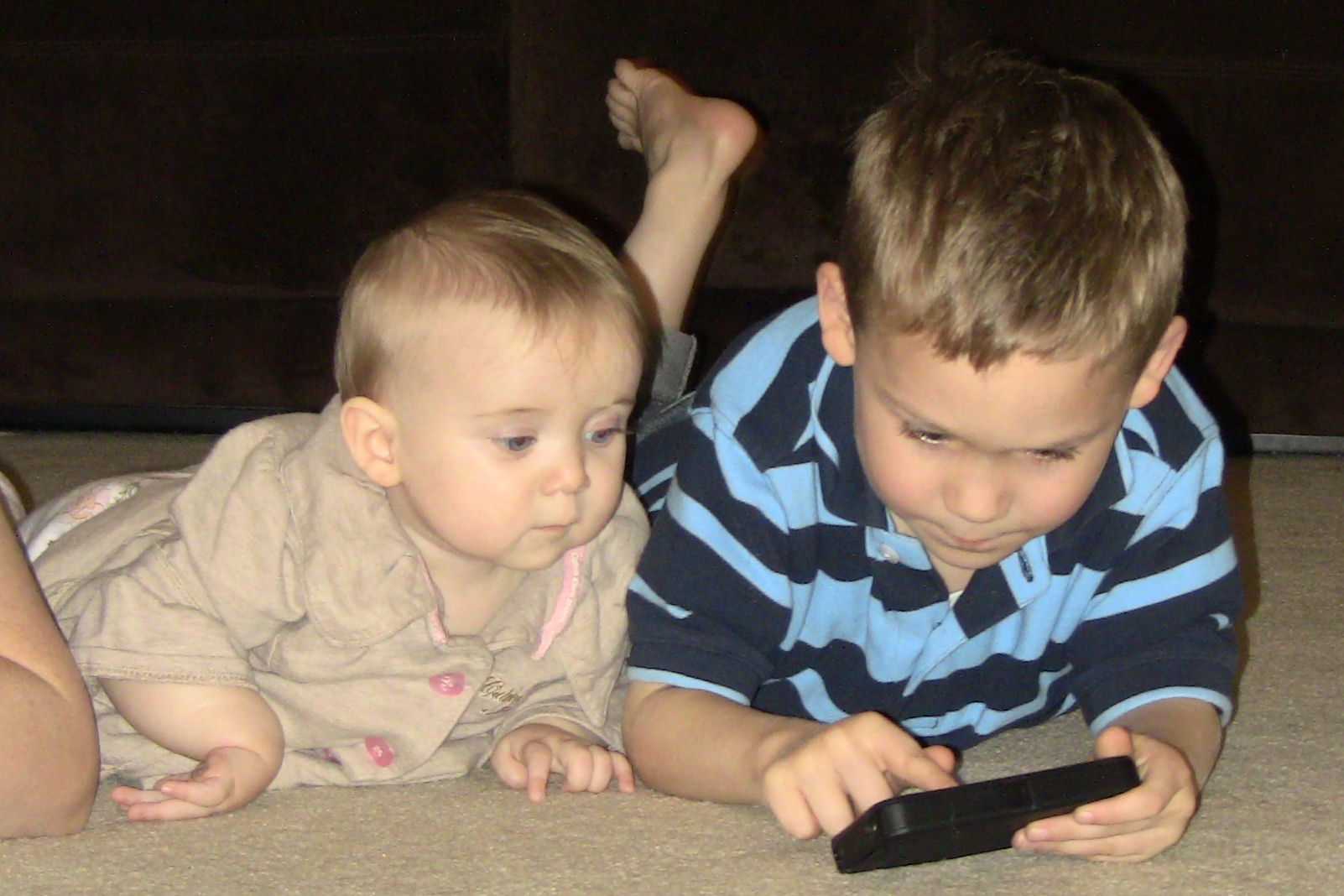
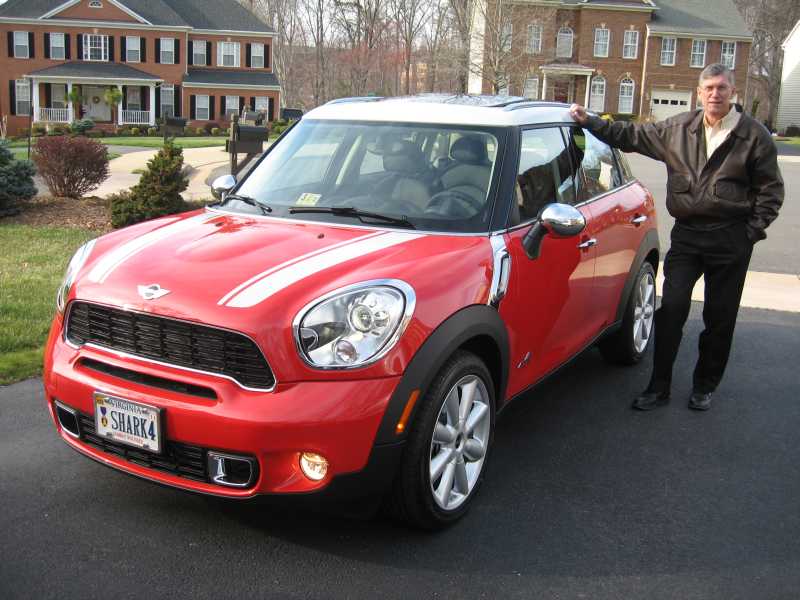
|
















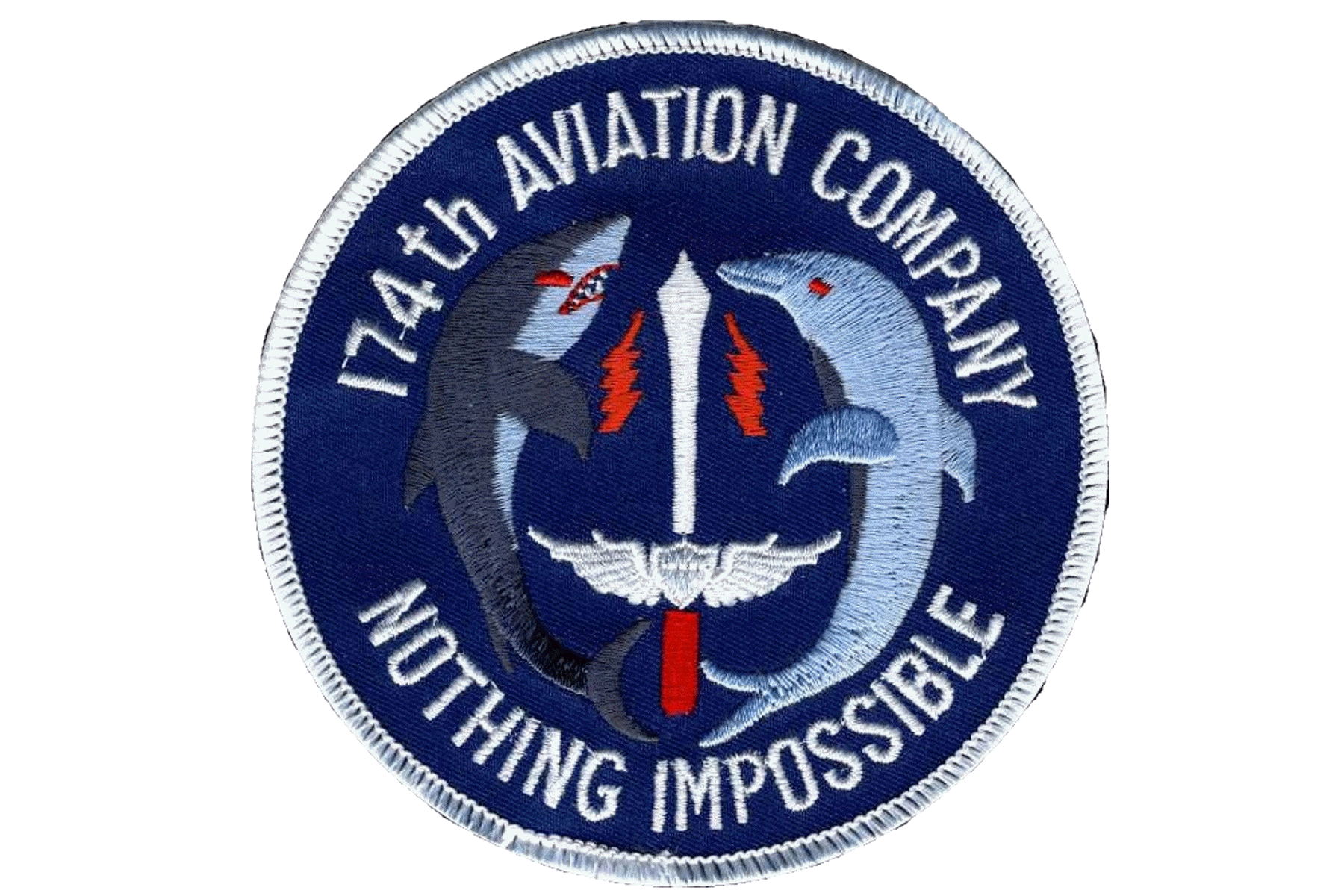
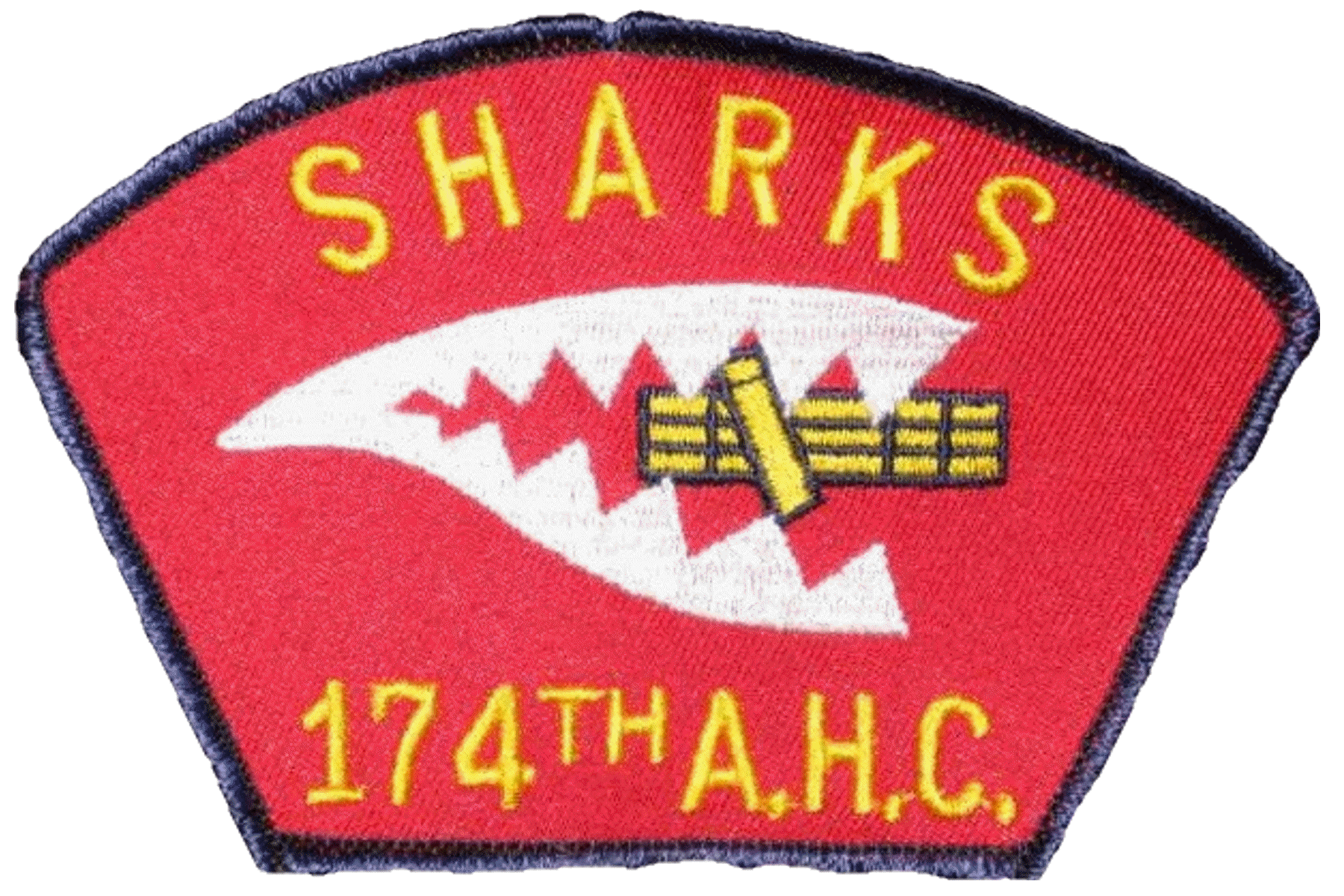
















 Click here
Click here